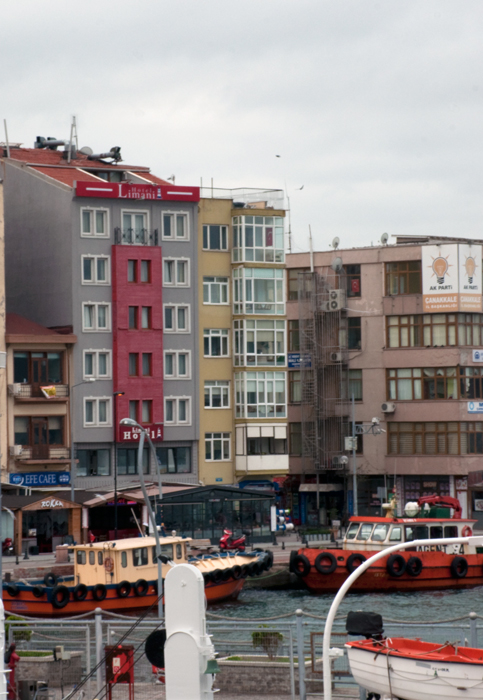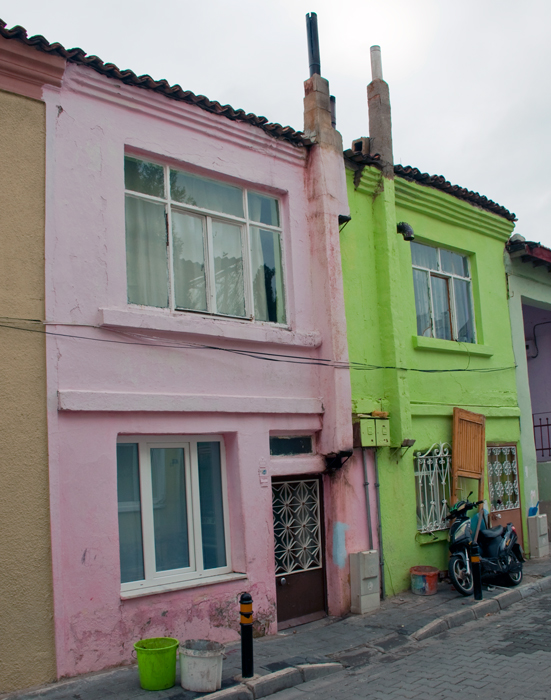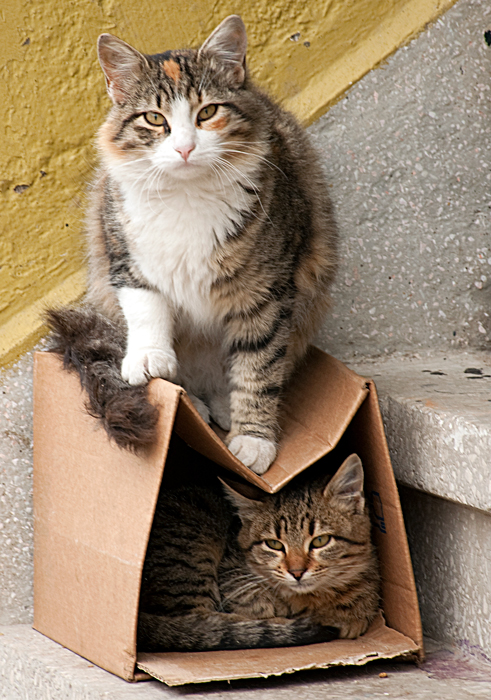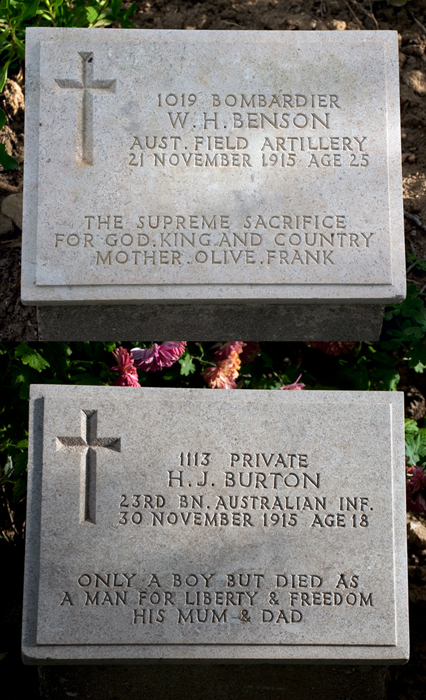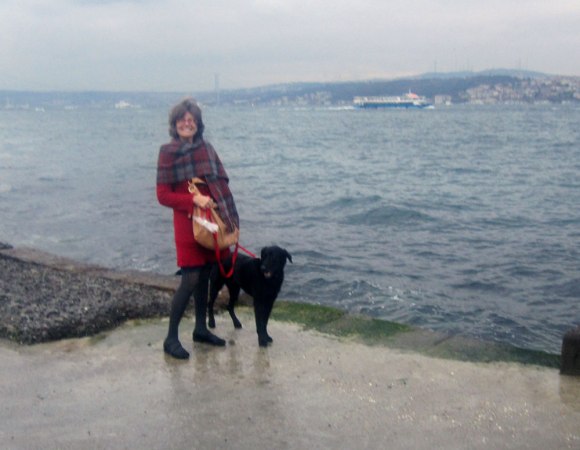I have many half-written posts for this blog. Some will eventually make it to these pages…this time, though, I’m borrowing from another blogger…
Ten Important Life Lessons You Learn From Living Abroad (http://www.bootsnall.com/articles/12-01/10-important-life-lessons-you-learn-from-living-abroad.html) got me thinking. I love living away from my country and wish I’d done it a long time ago. Here is my experience from the perspective of Whitney Cox’s 10 important life lessons…
1. How to get used to almost anything. Whitney mentions cultural littering in Vietnam…also a habit here. There is a big seaside park across the street and three stories of steps below our apartment. It is a mess of trash each evening, with the municipal workers out each morning cleaning up. The trash pickup does employ people. And, in fairness, there are few trash receptacles available.
Despite the scofflaws in the US, picking up after one’s dog is understood to be required. Not here. Jim and I are religious about it, just to set the example. Maybe because of the Olympics bid, parks are being refurbished, including numerous trash bins. I’ve also noticed many smaller new trash cans on the streets – they come in handy when I am setting my good example. Being unable to read newspapers, I may be unaware of a scolding campaign in action.
The lesson’s point is about stretching one’s comfort zone. It is not a stretch living in Moda, life is easy for us here. Less so for Lucy who is traumatized by the mean street dogs. We’ve also had a very mild comfortable summer weather-wise. Moda is like a non-yuppie Carmel, California. People stream in during the weekends and evenings to dine, saunter and slurp ice cream cones. Lucy and I get in our 10,000+ steps in the evenings just wandering around Moda and Kadıköy. Shops are open late, restaurants later, and the streets are full.

Gözde Şarküteri — the name means favorite delicatessen…it is ours.
2. How to cook. We miss having an outdoor grill, but we’ve adapted. This summer our go-to meal is meze…little plates of appetizers that fish restaurants (and others) present on a huge tray for you to choose from. We’ve found our favorite “deli” in the Kadıköy Çarşısı for meze to take home. We know what we like to order… Sos Hamsı–pickled fresh anchovies in an olive oil tomato sauce, and Patlıcan Salatası–smoky, roasted mashed eggplants. We have a few other favorites, and then we are always handed forks of something new to try. I wasn’t too keen on the chunk of cooked liver I popped in my mouth the other day.
We are of a different mind than Whitney Cox. We aren’t trying to recreate foods we miss; we are trying to use the ingredients we have here to make foods we like. I’ve cheerfully substituted my favorite California summer lunch of Insalata Caprese for Çoban Salatası (Shepherd’s Salad). Çoban Salatası is ubiquitous, consisting of fresh tomatoes, cucumbers, sweet green peppers (not bell), and sometimes onions and parsley. Mine includes the tomatoes, cucumbers, peppers, plus fresh basil and mint from my window garden. I’m very happy using Nar Ekşili Sos instead of balsamic vinegar, although Italian balsamic is available and in my pantry. Nar Sos is a sweet/sour pomegranate sauce…SO good in salad dressing.
The food category zeytinyağlılar — cooked vegetables like green beans, eggplant, artichoke hearts, zucchini, in various combinations and mixed with olive oil served room temperature — is our other summer staple. There are many local places that prepare them beautifully, so we take out. We love to cook, but don’t have to here. Our kitchen is hot in the summer too.

Our samovar and cezve. We are prepared to serve tea to a group for hours, and make Turkish coffee.
3. The importance of sharing a meal. Yes. Given that there are 6, maybe 12, restaurants per block, sharing meals is what we do. I am looking forward to creating a Thanksgiving meal…it won’t taste quite the same as it does at home, and that will be the fun of it!
4. How to ask for help. This is one of the most humbling (in a good way) parts of living in culture where I don’t speak the language. Turks will often see a perplexed look on our faces and step right in and help us in English. Frequently, no English is spoken. Jim, somehow, gets what he needs by plunging in with English, even to non-English speakers. His stubbornness, however, has also had him bring home margarine instead of butter – literally and figuratively.
I am lucky not to have Ms. Cox’s problem of too-big feet. Turkish shoes are beautiful, and I love buying them. Unfortunately, some of my American guests size-out. It is hard to find larger than a Turkish 40, a US 9-10.
Our Turkish isn’t good enough to solve problems by phone, so we found our window screen guy, for example, by walking by his shop and seeing that he offered what we needed. I’m in need of a glass table top, and watch for a cam (glass) shop in my travels.
There are really good expat networks here, especially for women. I’ve made friends, and can pose questions on the listservs.

Acquiring stuff, see #6. This “antique” kitsch belongs in Orhan Pamuk’s Museum of Innocence. It was a moment of weakness. If Jim had been with me, it wouldn’t be on our shelf now.
5. How to question the status quo. Ms. Cox says all is culturally relative. True. Some of what we’ve had to get used to is delightful. Like, why do all of the waiters DISAPPEAR when it is time to bring the check? If you’re an American in a hurry it can be annoying…but I always found being pressured by an establishment trying to turn tables way more unpleasant. Here, one can nurse a glass of çay all night if they want to. There are too many goodies on the menus to stop at çay.
Another amazing thing…if you don’t want to just split a check…the waiter will patiently walk to each person with the overall bill and total up an individual amount. Imagine! I’m always cool with splitting the check, but often a large group doesn’t want to do that.
Another thing I like…kuruş means cents…little change. If the total is 10.12 TL, the shop doesn’t collect the 12 kuruş. For 51.25 TL, the shop may not collect the 1.25, especially if they know you. If the total is 9.93TL, they keep the 7 kuruş. I remember noticing in New York when the bill was $x.98 and a restaurant automatically rounded up on my credit card. It seemed sneaky to me, and it never went the other way.
There are the it’ll-be-funny-later humiliations…we visited a new friend in a lovely apartment with a large marble foyer. She met us at the door, casually but fashionably dressed from head to toe. It wasn’t until I crossed that foyer ¾ of the way through our visit that I realized Jim and I HADN’T TAKEN OFF OUR SHOES! It dawned on me when I saw shoes of other guests (we had arrived first), and a basket of little blue shoe baggies sitting near the door. Aargh. I apologized profusely, and I hope we get invited back. Our hostess’ shoes matched her outfit, and were indoor-only shoes. This city is very dirty and dusty…I’m sure the homes stay cleaner leaving street shoes at the door.
A problem with taking off shoes is wearing the slippers you are offered. That night, rectifying my faux pas, I stepped out of my cute little beaded sandals into big black chunky mules. The look was a “Glamour Don’t”.
It’s also humorous…our Turkish guests know we don’t remove our shoes…so when they come we tell them they can if they want but don’t have to. One of them laughed and said she wasn’t prepared to, because she knew she wouldn’t have to…holes in socks maybe, or maintaining the integrity of her outfit? Or maybe they think our floors are so dirty they don’t want their feet on them? I laugh.
There is a laundry list of un-good things; particularly done by the cuckoo leaders which prompts questioning the status quo as well. I automatically compare what I see (but maybe don’t understand) to practices in my country.
Standing back and taking the long view of the US is illuminating. I think what I see here wouldn’t occur in the US until I see a crazy example, like the Californian who may receive a JAIL sentence for vandalizing the sidewalk in front of B of A in protest…with chalk!?
6. How to have fun anywhere. Istanbul is a capital of fun. However, Cox’s point is when no longer on vacation, we have to look for fun in a new place…because being unmoored from our home culture and friends; it often doesn’t come to us. Jim and I stayed busy studying 3 months of intensive Turkish and setting up our home. We had to shop a lot. We worked at making friends, but were distracted by our to-do lists. Then we had about 8 weeks of non-stop US visitors. Then Ramazan and summer arrived and people, including some of our new friends, left Istanbul. Our apartment building is very quiet – ½ of the families have gone to their summer homes. So here we are, on our own, finding new things to do. It is pretty easy and fun, and we look forward to when people return to town.
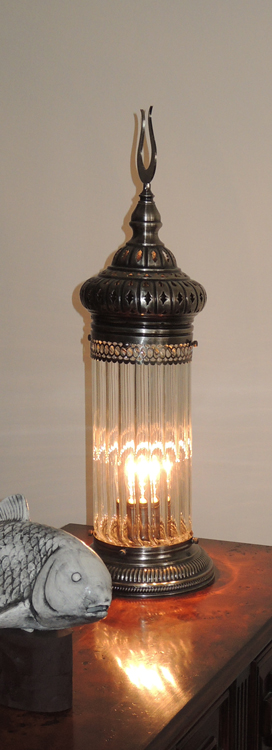
The results of our “nesting” adds up to stuff, unfortunately. The ornament on the top of this lamp represents a stylized Ottoman lale (tulip).
7. How to throw stuff away. Uh oh. See #6 above. We didn’t do a good job of tossing things in California…except into storage. Our 8 initial suitcases and stuff we shipped wasn’t enough. Furniture, dishes, lamps, and rugs from the Caucasus and Çanakkale…We love indigenous ceramics from Palestine, from Iznik in Seljuk and Çanakkale styles. We have Suzanis from Uzbekistan, pillow covers from Palestine — we have done it again! Turkish homes we see of people our age tend to have formal European style furnishings. Our younger friends like more unadorned neutrals, or IKEA contemporary. We love the faux Ottoman inspired colorful lights and inlaid tables. I’m dismayed at how American-ly acquisitive I am. Now I have a house AND an apartment of stuff! Help me.

Stuff: rugs (this one from Çanakkale), ceramics, and those colored mosaic lights found in the tourist shops in the bazaars…yabancı (outsider) decor. The big coffee table is our landlord’s. Tape on the sofa is protection from Rita, see #8.
I’m not thinking about leaving, but do like the author’s idea of giving things away as “something to remember me by”.
8. How to talk to strangers. This is the most fun of being an expat. And, I’m counting on a lack of understanding of cultural references in my blog, so if I am being watched for comments critical of you know who, here and on Facebook, it will be lost in translation. (sounds paranoid, but locals are being jailed for what they write on social media) Turks often act like we are a novelty — Americans living in Kadıköy– and love to engage with us, and we feel the same. While all may not be understood, that both sides leave smiling is enough for us.
Our kedi (cat) got out, and the kapıcı (doorman) rang our apartment one night asking if the gray cat that flew out the main building door was ours. Rita is outrageously shy and spent 24 hours hiding outside. We found her 3 buildings away crouched behind a prickly hedge, only because she answered Jim’s call. The day we were looking for her I saw Doḡan on the street and said “kedi yok” (no kitty). Today I saw Doḡan and updated him, “kedi var, kedi mutlu” (we have the cat, the cat is happy). He laughed and called the good news in to his wife. It is the little things.

An original rooster pitcher by Adil Can Nursan of Iznik, based on Seljuk designs. I want to return and buy the hen pitcher.
9. How to handle peer pressure. Cox talks about becoming aware of what you really feel/believe by being able to compare your home values to what the norms are here. Subversive behavior amuses me sometimes, and I find dumb rules annoying. I assume (erroneously?) here that if Turks aren’t following our laws, those laws don’t exist, and while maybe they should, it feels freeing that they don’t.
Like litter laws, see #1 above. And traffic. Istanbul traffic signs are mere suggestions. Jim has driven once here, I haven’t yet. He was stressed at the inattention, the phoning/texting while driving, the lane creeping, etc, etc. The street in front of our apartment is marked one-way, but Lucy was clipped (gently, thankfully) by a car going the wrong way. Turkey has high accident rates. I think non-texting laws here are needed and should be enforced.
I loved the pan banging at 9pm at night as political protest. It has stopped. Laws can be put into effect within 24 hours here. Laws were written making it illegal. People have been fined $5,000 for doing it. Surreal, no?
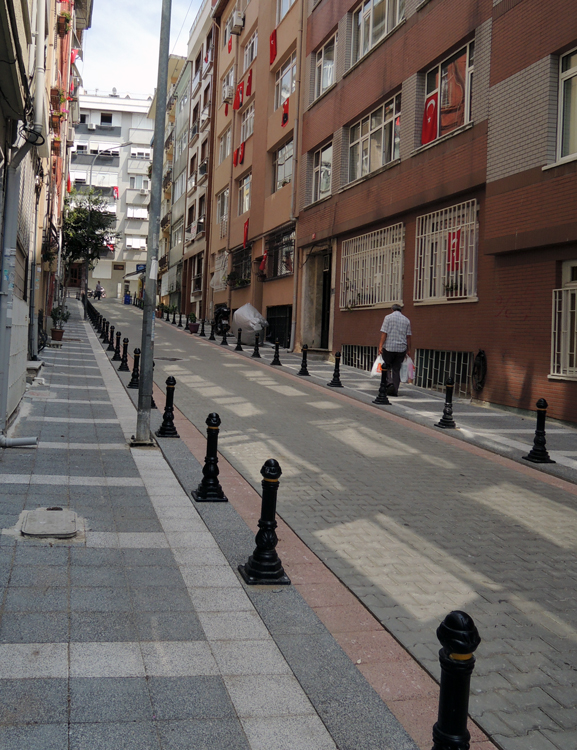
New wide, easy to walk on sidewalks. The side the man is walking was all angled parking before.
Recently the belediye (municipality) dug up what looked like perfectly good streets and replaced them, widening sidewalks and removing parking spaces as they went. Cars are kept off the walks by 2 foot high barriers spaced 5 feet apart. I joked that the bureaucrat who ordered this project must own the parking garages (he might). Parking is a big problem, so a number of those stanchions have been removed and temporarily screwed into place to SAVE a parking spot (on the sidewalk) until later. Many have been backed into and broken – they are made of a composite which breaks. The new sidewalks are really nice, smooth and I trip a lot less. The stanchions look pretty ratty already.

10. How to empathize. “Living abroad puts you on the outside looking in.” I recently realized that this is my first experience of being a minority. I’m privileged, but I don’t know the boundaries of my rights. I watch the violent repression as the paranoid current party scorches the earth trying to double down its power. As a white educated affluent person in my own culture, although of ‘lesser’ gender, I was not marginalized. I don’t feel marginalized here either in the day to day…unless I’m reading the inflammatory statements made by politicians about foreigners. It may be as a foreigner I will be treated better than a Türk…not sure. Certainly, as someone over 40 (++), I am treated better than I would be in the US. Here, I am offered a seat on all public transportation. I’ve come to count on it 🙂

Another Adil Can Bey design. His atölye (workshop) in Iznik is a place of wonder.
We chose Moda to live in through research, not luck. We have learned of additional benefits, however. It is the center of the opposition party’s supporters, very secular, and there haven’t been any TOMA (water cannons) or brutality at the protests here. That is a relief, even though we aren’t protesting. Here in Moda, during the long days of Ramazan, restaurants continued to serve food, people who weren’t fasting were enjoying their meals in public…it is comfortable. I wouldn’t have minded experiencing the challenges of a broadly fasting society, it is part of why we live in a foreign place…and I’m getting a workout just trying to speak Turkish!
My relationship with Turkey and Istanbul was like the romance where early on you are thinking maybe this can be forever. There were many unanswered questions, and I wasn’t sure how I could cope without my friends of 30 years from Northern California…but it was enticing. While we were in the police state of Israel in May, I felt separated from and was yearning for the beauty and freedoms of Istanbul. I was happy that for the first time I could leave a place in the Middle East for home and still shop in an “Oriental” souk.
And then, the object of my affection, Turkey, showed a different, deeply disturbing side. The place didn’t, but the government did. Just two weeks after I joyfully returned home, I was reminded of the type of discomfort I felt in Israel. Turkey might yet be forever, but my disappointment has been sobering. It doesn’t change my appreciation for the experience, nor my enjoyment of the place (too much), but the extra dollop of blind honeymoon excitement is finished.

Another sunset on the Marmara Sea.
I still love what I love: the cultures that are mashed together over the eons, the people, and their music, and their food, and their art. It is one of the beautiful places on earth. It has the best weather I have ever lived in. I am depressed about the violence and misuse of power, not only here, but in the region. I’m glad I traveled in Egypt while I could, and hope to return. I didn’t realize the extent to which the craziness was here in Turkey too, even though I had heard all about it. Time will tell how it plays out…meanwhile; I’m continuing my dondurma (ice cream) research.

















